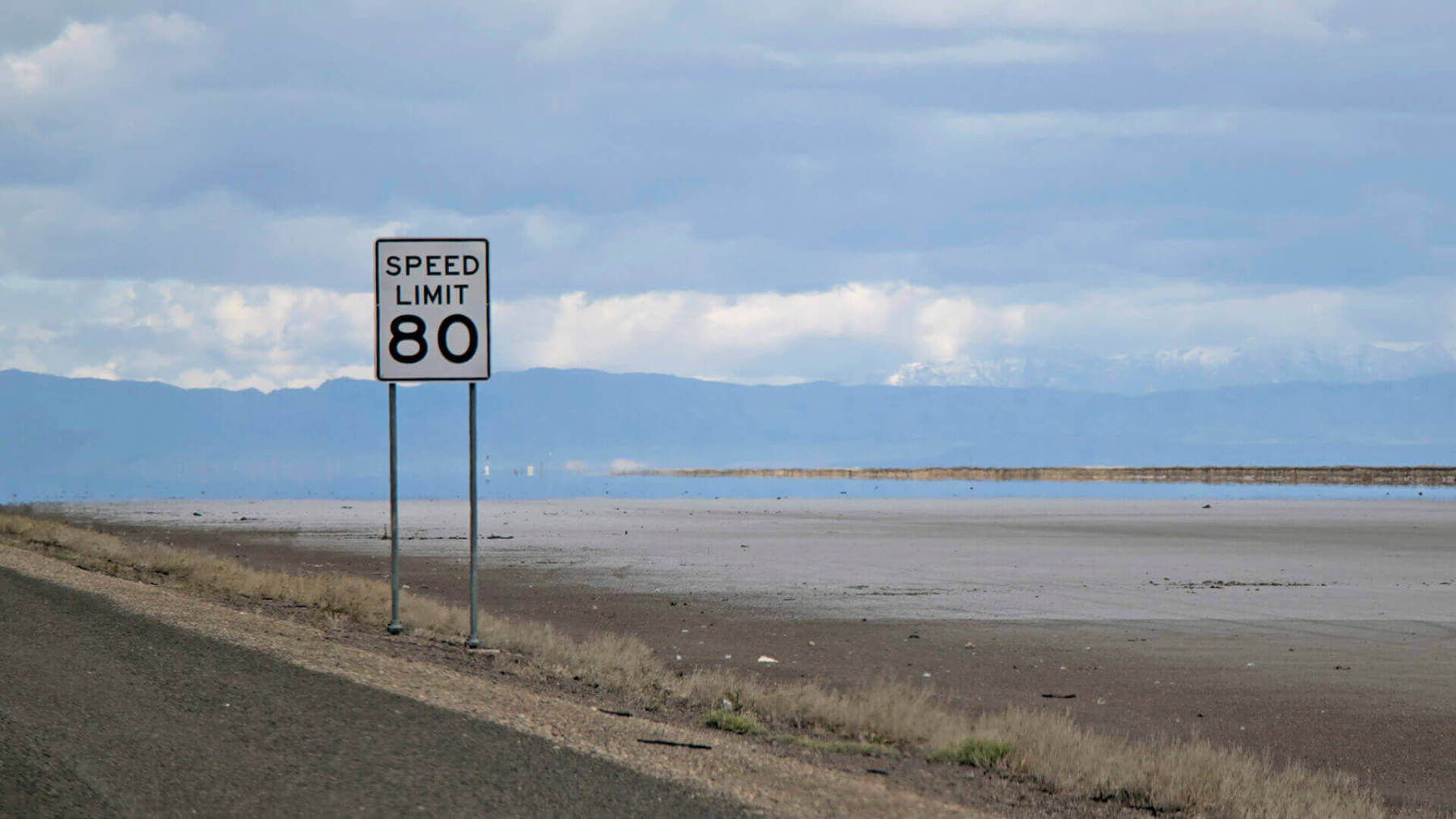Nevada has become the most recent state to raise speed limits to 80 mph on a 130-mile stretch of Interstate 80, beginning 40 miles east of Reno to Winnemucca.
The new maximum speed limit law was signed into effect by Gov. Brian Sandoval 18 months ago. During this time, highway engineers scouted locations to find one suitable for motorists to travel at 80 mph for long distances.
The 130-mile stretch along Interstate 80 was chosen after highway engineers deemed it safe due to its secluded rural desert setting and a small risk of causing serious injuries and damage from auto accidents.
New 80 mph signs have been installed along the designated stretch of Interstate 80, now allowing motorists to travel 5 mph faster than was previously allowed.
The speed limit drops down to 65 mph near populated areas, such as an electric car battery plant owned by Tesla, Inc. and through the casino district in downtown Reno.
Currently, there are only seven states that allow motorists to travel at speeds higher than 75 mph:
- South Dakota
- Montana
- Wyoming
- Utah
- Idaho
- Texas
- Nevada
The change was originally opposed by the Nevada Highway Patrol and transportation officials, who worried about the safety of motorists traveling at speeds of 80 mph.
However, opponents to the law changed their opinion after discovering the majority of motorists consistently travel at an average speed of 78 to 80 mph.
Although the current increased speed limit only applies to the secluded stretch on Interstate 80, Nevada’s legislature may consider additional locations in the future.
Raising Speed Limits May Increase Traffic Fatalities
Many states have considered legislation that would raise speed limits on highways and interstates.
However, doing so may add to the problem of increased traffic fatalities experienced in the U.S. during recent years, according to the Insurance Institute for Highway Safety (IIHS).
A 2016 IIHS study found that increased speed limits in the U.S. have been attributed to more than 33,000 traffic fatalities over the last 20 years.
The study found that 1,900 traffic fatalities in 2013 were caused by increased speed limits, which canceled out the estimated number of lives saved by frontal airbags during that year.
Speeding Dangers
A concern of traffic safety advocates about raising speed limits is the effect it will have on a driver’s reaction time.
Drivers are not able to quickly react to sudden changes in the road’s conditions or unexpected dangers when traveling at high speeds.
A vehicle’s impact when striking an object is also increased when traveling at higher speeds, according to the National Safety Council (NSC).
The NSC believes that raising speed limits will only encourage people to drive faster and will make the nation’s highways more dangerous.
Some other concerns include:
- Drivers are more likely to lose control over their vehicles.
- Vehicle occupant protection equipment, such as seat belts and airbags, is not as effective at higher rates of speed.
- Speeding increases the distance a vehicle requires to come to a complete stop.
- Higher rates of speed increase crash severity and cause severe injuries after an accident.
- Fuel consumption and costs will increase as the speed limit rises.
- Speed-related crashes come with psychological and economic implications for at-fault drivers and victims.
Another major concern is that raising speed limits will only encourage motorists to drive faster and continue to ignore the designated maximum speed as they do today.
The NHTSA has identified several behaviors that lead to speeding:
- Aggression toward delays in traffic, such as slower drivers or congested roadways.
- A sense of urgency to reach a destination as fast as possible. This could include drivers who are running late for school, appointments or work who are likely to violate speed limits to meet time restrictions.
- The anonymity drivers have in their vehicles can disconnect them from the effects of their actions and create a lack of accountability for violations such as exceeding the posted speed limit.
- Reckless behavior or a disregard for the law may lead some motorists to consistently ignore posted speed limits.
In order for drivers to abide by the posted speed limit, their behavior must change to be more compliant with traffic laws designed to keep motorists and pedestrians safe.
Contact an Experienced Auto Accident Attorney
Speeding is a form of negligent and reckless driving that can lead to serious consequences if it causes an auto accident.
If you have been injured or lost someone you love to a negligent driver in a speed-related collision, contact Henness & Haight’s Las Vegas auto accident attorneys.
We understand the troubles you may be experiencing after an auto accident and will help you determine if you are entitled to legal action and compensation through a free, no-obligation consultation.
Our experienced attorneys never charge clients upfront for legal fees and will only require payment if we are successful in recovering damages for your claim.
